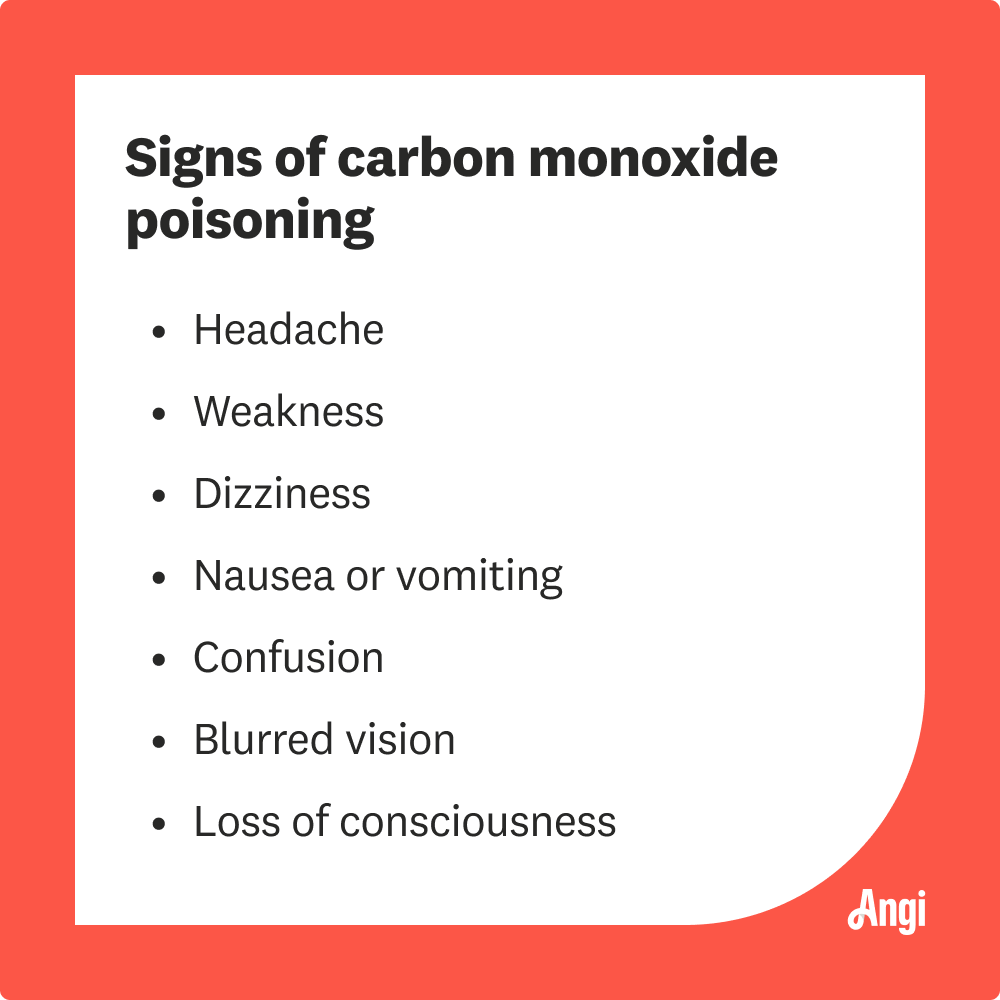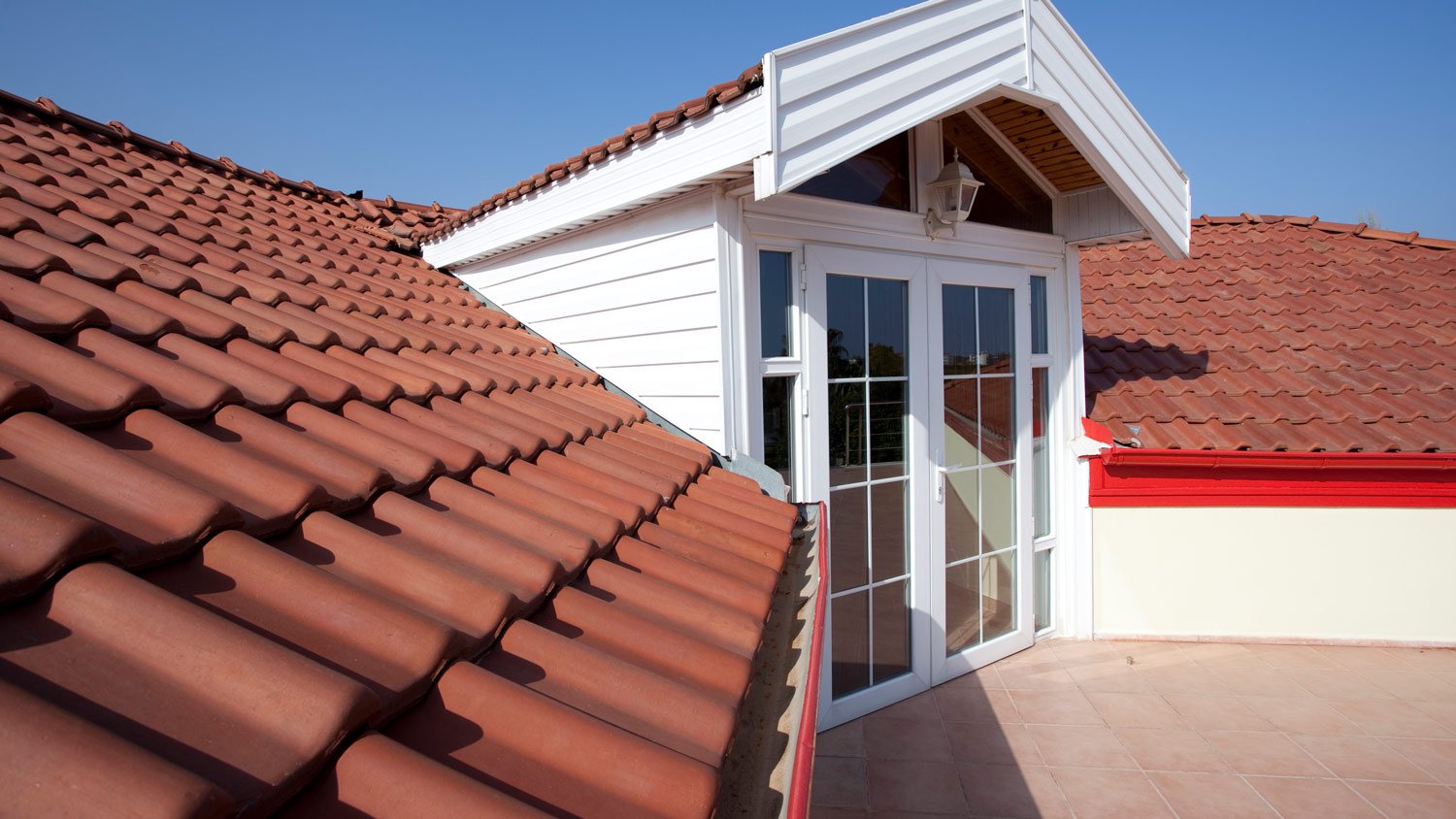
A metal roof can defend your home against Ohio’s varying weather conditions. Learn how much a metal roof costs in Columbus, OH.
Everything you need to know about new roof sickness and carbon monoxide poisoning


While rare, new roof sickness can happen as a result of carbon monoxide buildup.
Properly sealing the attic and venting the roof can help avoid issues.
Call 911 immediately if you suspect carbon monoxide poisoning.
Some off-gassing may occur from roofing materials, but it is likely not dangerous.
Opening windows, scheduling work when you are not home, and communicating with your roofing professional can help mitigate any issues.
Getting a new roof is exciting. It is like a facelift for your home that can instantly boost curb appeal. But along with a new roof comes the potential for “new roof sickness” (aka carbon monoxide poisoning) that can be caused by an improperly ventilated roof. While most homeowners will get their new roof without issue, it is always good to be mindful of new roof sickness symptoms, so that you can prevent this issue from happening in the first place.
When a new roof is installed, any chemicals used to adhere underlayment and membranes to the roof, as well as the type of roofing material itself, particularly asphalt shingles, can off-gas. This means that they release chemicals into the air which can create an unpleasant, or “new roof”, smell in the house. This is normal and, while it may be irritating, it is temporary and should not cause people living in the home to get sick.
New roof sickness, on the other hand, is a serious issue likely caused by a buildup of carbon monoxide. In a home, carbon monoxide (CO) is produced from dryers, furnaces, water heaters, wood stoves, and more. The fumes are typically vented through the HVAC system and escape into the atmosphere. In rare cases, installing a new roof can disrupt the ventilation system and prevent CO from leaving the home, potentially leading to poisoning. This is a serious illness, and symptoms include headache, vomiting, loss of consciousness, and more.

Carbon monoxide (CO) is an odorless, tasteless, colorless, and invisible gas that can pose serious health risks, such as brain and heart damage. Breathing in too much carbon monoxide results in your body replacing the oxygen in your blood with CO, which can lead to serious illness or death.
Ventilation systems function to direct CO outside and, in turn, keep you safe. Sometimes these ventilation channels run through the walls, attic, and roof, and it is these channels that can be damaged after a severe weather event or a new roof installation.
Improperly ventilated roofs can cause CO buildup inside the home. This can happen when a flue pipe becomes disconnected during the tear-off or installation process. Another common issue is when a roofer turns the vent instead of just the furnace cap. If the joints between the different pipe sections are not secured together, these sections can disconnect and allow CO to leak inside. If this happens, it is possible that you could get new roof sickness.
If you have been hit by a serious storm or hail event, check to see if the ventilation caps on your furnace and chimney are damaged. Hail is a common reason for dislodged vent caps; once dislodged, caps can collapse and consequently block the ventilation pipe’s opening. As a result, the vents are not properly able to direct the CO outside.
For instance, hail, rain, tornadoes, and extreme winds can pose threats to your roof, such as carbon monoxide leaks. A storm can result in damage to your furnace caps. If a furnace cap is too far down the flue pipe, the venting will be obstructed, trapping combustion gases. In order to avoid new roof sickness, it is a good idea to hire an expert following any major weather events.
While CO issues after roof repairs and replacement will most likely never happen to you, it is always smart to educate yourself. You can be more knowledgeable about CO poisoning by understanding what it feels or looks like. The most common symptoms are as follows:
Headache
Weakness
Dizziness
Nausea or vomiting
Confusion
Blurred vision
Loss of consciousness
Although everyone is at risk of experiencing CO poisoning, some people are more susceptible than others. Those who are more vulnerable include:
Infants
Older adults
People with chronic heart diseases
People with anemia
People with breathing problems

There are a few ways to take precautions when it comes to avoiding CO incidents inside your home.
One initial way to prevent unseen issues is to hire an HVAC expert to inspect your roof after any repair or replacement work has occurred. While this may add to the overall roof replacement cost, it is well worth it.
To be extra conscientious about your home’s CO levels, you can install a battery-operated or battery backup CO detector in your home.
Note: Ensure you check the battery a couple of times a year and replace it every five years. Carbon monoxide detectors usually cost somewhere from $15 to $150, while labor fees to install them start at $45 per hour.
In general, you should get chimney inspections every year to make sure your chimney is not blocked by debris. When hiring a local roof inspector, make sure you do some research to ensure you are making an informed choice based on factors like costs and reviews.
Always inspect the attic after any repairs or a roof replacement, ensuring the pipes have not come loose. If they do, contact an HVAC repair service in your area.
Following any severe storm or a new roof installation, check the flue vent piping to make sure it has not disconnected or come loose. If you find a rupture, contact a licensed HVAC professional who can properly patch up the hole. Since improper patching can lead to CO buildup, it is best to leave this job to a professional. In addition, check the venting exit to make sure it is clear of any type of debris, leaves, or dirt.
If you believe that you are experiencing CO poisoning from new roof sickness, it is important to call 911 or get to an emergency room. Once at the ER, doctors will provide you with oxygen via an oxygen mask, and this will counterbalance the buildup.
While it is very rare to experience new roof sickness, it is good to learn about the key warning signs, just in case. By staying ahead of the game, you will be better equipped to handle any given situation.
In a new roofing project, any adhesives, roofing materials, and the shingles themselves can create indoor air quality issues, sometimes referred to as the new roof smell. As these materials off-gas, they release chemicals and odors into the air. These odors can seep into the home through open windows and any cracks throughout the home. Even though these odors are temporary and not necessarily dangerous, they can be unpleasant and lead to headaches and other issues for residents or visitors.
Fortunately, there are ways to prevent or reduce indoor air quality issues when getting a new roof. Planning ahead, using alternative materials, and opening a few windows to get fresh air can go a long way toward mitigating indoor air quality issues before, during, and after the project.
To reduce the off-gassing issues that come with roofing materials, you can discuss with your local roofing contractor to see if there are more environmentally friendly materials available.
If you think you will be sensitive to the roofing material odors, you can ask your roofing professional if you should stay home during the roof replacement, or see if you can schedule the work for when the home is unoccupied. This will allow some time for the worst of the smells to dissipate before you have to be in the home.
Talk with your roofing professional to learn what common issues arise when they install a roof. Let them know if there is anyone in the home who may be more affected than others, such as an infant, an elderly person, or someone with respiratory issues. They may have recommendations for you.
Open the windows—all of the windows! Dust from the roof replacement can settle, but opening the windows to allow in fresh air can dissipate the smell and dust. Bring in fans and get the ceiling fans going to circulate as much air as possible through the home to get rid of any odors as quickly as possible.
A qualified roofer will be able to offer recommendations and take precautionary measures to make sure the indoor air quality will be affected as little as possible. They will also take care not to damage ventilation and make sure that the attic is properly sealed and vented before they leave the job site.
While new roof sickness is a rare occurrence and most roofing jobs do not have issues with carbon monoxide buildup, it is always good to be as educated as possible about potential dangers of any home improvement project. Knowing the signs of carbon monoxide poisoning, as well as some strategies to preserve indoor air quality during a roofing project, can give you peace of mind, even if the house smells after a new roof is installed.
From average costs to expert advice, get all the answers you need to get your job done.

A metal roof can defend your home against Ohio’s varying weather conditions. Learn how much a metal roof costs in Columbus, OH.

Dealing with a visibly damaged roof or leak? Learn about roof repair costs in Columbus to see how much you’ll need to budget for a permanent solution.

Learn about roof replacement costs in Columbus and what factors are at play to budget accurately and make sure you’re getting a fair price.

If you’re upgrading your roof with stone-coated steel, you should be aware of the total project cost. Learn what will impact your final stone-coated steel roofing costs.

Shingles that are losing their granules may not be protecting your roof. Learn why shingle granule loss happens and what it means for your roof.

Dreaming of a tile roof but not in love with how expensive clay tiles are? Concrete tile roof costs are much lower, but you still get that classic look.